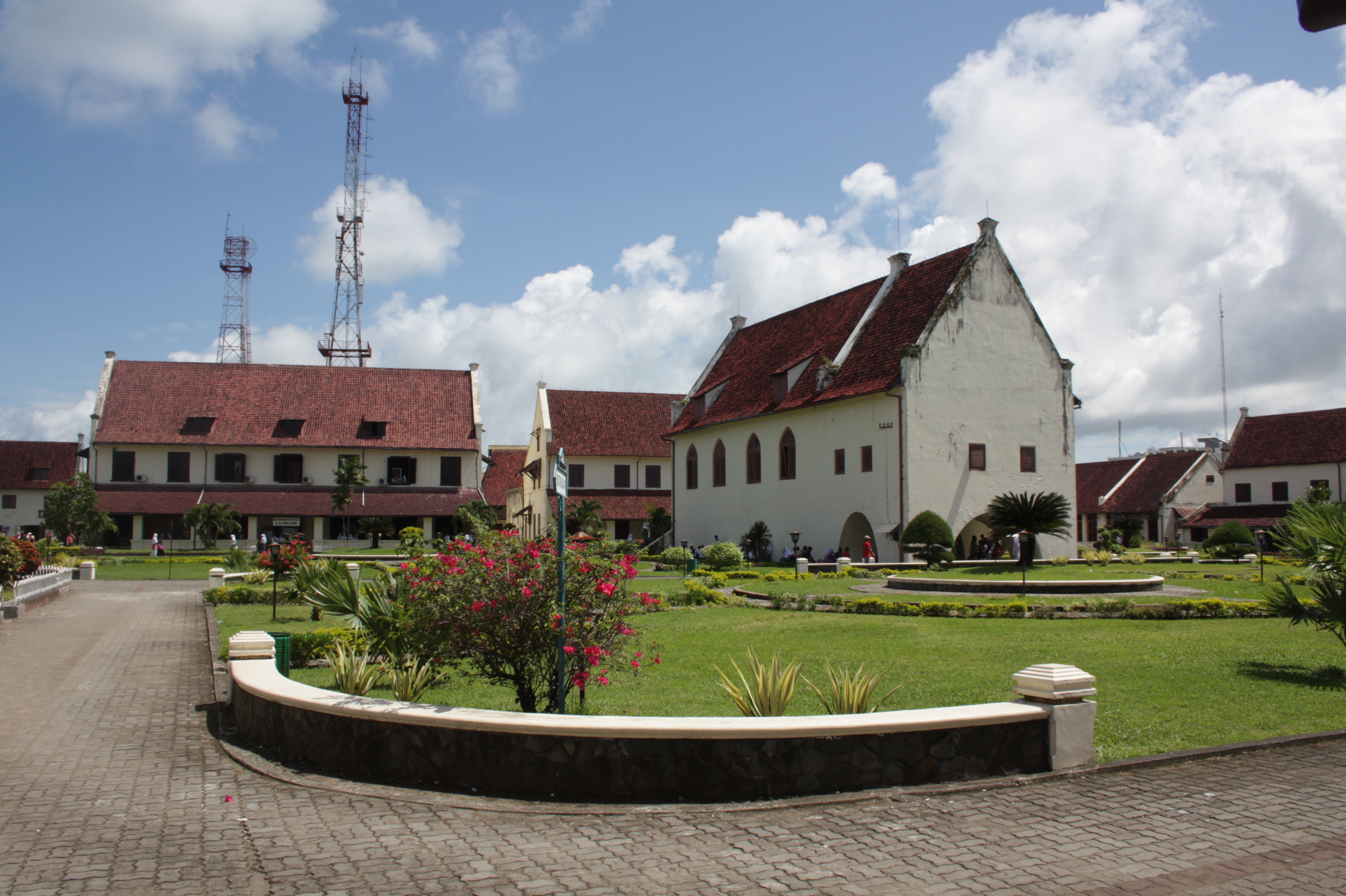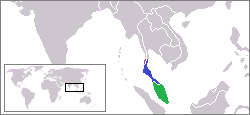|
Indonesia–Thailand Relations
Indonesia and Thailand have officially established diplomatic ties (; th, ความสัมพันธ์ไทย - อินโดนีเซีย ) on 7 March 1950. The two countries have since enjoyed a cordial bilateral relationship. Both countries have established embassies in each capitals, Indonesia has their embassy in Bangkok and consulate in Songkhla, while Thailand has their embassy in Jakarta. High rank stately visits has been conducted for years. Both nations are the founders of ASEAN and the members of Non-Aligned Movement and APEC. Indonesia and Thailand are viewed as natural allies. Indonesia is also appointed as observer in Cambodian–Thai border dispute. Following the military takeover of the government in Thailand in May 2014 — without intending to interfere in the internal affairs of Thailand — as part of the ASEAN Community, Indonesia calls for the restoration of democracy in Thailand. Indonesia urged the military and civilian elements in Thailan ... [...More Info...] [...Related Items...] OR: [Wikipedia] [Google] [Baidu] |
Embassy Of Indonesia, Bangkok
The Embassy of Indonesia in Bangkok ( id, Kedutaan Besar Republik Indonesia di Bangkok; th, สถานเอกอัครราชทูตอินโดนีเซียประจำประเทศไทย), a diplomatic mission of the Republic of Indonesia to the Kingdom of Thailand and concurrently accredited to the United Nations Economic and Social Commission for Asia and the Pacific (UNESCAP), is located at 600-602 Petchburi Road, Ratchathewi District of Bangkok. The first Indonesian overseas mission in Bangkok was opened as the Indonesian Office (INDOFF) in 1947, which was promoted to Legation in 1949, and later Embassy in 1956. History Indonesia, formerly the Dutch East Indies, first opened its representative mission in Bangkok under the name of INDOFF in 1947, which was located at a small soi beside Si Lom Road and headed by Izak Mahdi. The building of INDOFF acted as a headquarter of Indonesian people's independent movement during the Indonesian National ... [...More Info...] [...Related Items...] OR: [Wikipedia] [Google] [Baidu] |
Mataram Kingdom
The Mataram Kingdom (, jv, ꦩꦠꦫꦩ꧀, ) was a Javanese people, Javanese Hinduism, Hindu–Buddhism, Buddhist kingdom that flourished between the 8th and 11th centuries. It was based in Central Java, and later in East Java. Established by King Sri Sanjaya, Sanjaya, the kingdom was ruled by the Shailendra dynasty and Ishana dynasty. During most of its history the kingdom seems have relied heavily on agriculture, especially extensive rice farming, and later also benefited from maritime trade. According to foreign sources and archaeological findings, the kingdom seems to have been well populated and quite prosperous. The kingdom developed a complex society, had a well developed culture, and achieved a degree of sophistication and refined civilisation. In the period between the late 8th century and the mid-9th century, the kingdom saw the blossoming of classical Javanese art and architecture reflected in the rapid growth of Candi of Indonesia, temple construction. Temples d ... [...More Info...] [...Related Items...] OR: [Wikipedia] [Google] [Baidu] |
Kediri (historical Kingdom)
Kediri Kingdom (also known as Panjalu) Javanese script : ꧋ꦥŋꦗꦭꦸ, was a ''Hindu-Buddhist'' Javanese Kingdom based in East Java from 1042 to around 1222. This kingdom is centered in the ancient city ''Dahanapura'', despite the lack of archaeological remains, the age of Kediri saw much development in classical literature. Mpu Sedah's ''Kakawin Bharatayuddha'', Mpu Panuluh's ''Gatotkacasraya'', and Mpu Dharmaja's ''Smaradhana'' blossomed in this era. The kingdom's capital is believed to have been established in the western part of the Brantas River valley, somewhere near modern Kediri city and surrounding Kediri Regency. Etymology and names Actually, the city of Daha existed before the division of the kingdom. Daha is an abbreviation of ''Dahanapura'', which means ''city of fire''. This name is listed in the Pamwatan inscription issued by Airlangga in 1042. This is in accordance with the news in '' Serat Calon Arang'', that at the end of Airlangga's reign, the center ... [...More Info...] [...Related Items...] OR: [Wikipedia] [Google] [Baidu] |
Panji (prince)
The Panji tales (formerly spelled Pandji) are a cycle of Javanese stories, centred around the legendary prince of the same name from East Java, Indonesia. Along with the Ramayana and Mahabharata, the tales are the basis of various poems and a genre of wayang (shadow puppetry) known in East Java as ''wayang gedhog'' (the meaning here is unclear, as "gedhog" means "a thumping sound"). Panji tales have been the inspiration of Indonesian traditional dances, most notably the topeng (mask) dances of Cirebon and Malang, as well as gambuh dance-drama in Bali. Especially in the environs of Kediri, the suggested homeland of the tales of Panji, local stories grew and were connected with the obscure legendary figure of Totok Kerot. Panji tales have spread from East Java (Indonesia) to be a fertile source for literature and drama throughout Indochina Peninsula (a region that includes modern-day Thailand, Cambodia, Laos, Myanmar, South Vietnam) and Malay World as well. Origin In these ro ... [...More Info...] [...Related Items...] OR: [Wikipedia] [Google] [Baidu] |
Minangkabau Highlands
The Minangkabau Highlands ( id, Dataran Tinggi Minangkabau, Minang: ''Minang Darek'') is a mountainous area in the province of West Sumatra, located around three mountains—Mount Marapi, Mount Singgalang, and Mount Sago—in west-central Sumatra, Indonesia. The highlands are part of the Barisan Mountains, the largest mountain range in Sumatra. They are home to the Minangkabau people who refer them as ''Alam Minangkabau'', or "the world of Minangkabau". This area formed a kingdom known from at least the 7th century as Malayu. It is probable that wet rice cultivation evolved in the highlands long before it appeared in other parts of Sumatra, and predates significant foreign contact. Inscriptions in the area have been found from the rule of Adityavarman (1347–1375). The Dutch began exploiting the gold reserves in the highlands in the 1680s. They dominated the trade in the area, severely restricting the trade outlets between the highlands and the ports on the coast between 18 ... [...More Info...] [...Related Items...] OR: [Wikipedia] [Google] [Baidu] |
Makassar
Makassar (, mak, ᨆᨀᨔᨑ, Mangkasara’, ) is the capital of the Indonesian province of South Sulawesi. It is the largest city in the region of Eastern Indonesia and the country's fifth-largest urban center after Jakarta, Surabaya, Medan, and Bandung.Ministry of Internal AffairsRegistration Book for Area Code and Data of 2013/ref> The city is located on the southwest coast of the island of Sulawesi, facing the Makassar Strait. Throughout its history, Makassar has been an important trading port, hosting the center of the Gowa Sultanate and a Portuguese naval base before its conquest by the Dutch East India Company in the 17th century. It remained an important port in the Dutch East Indies, serving Eastern Indonesian regions with Makassarese fishers going as far south as the Australian coast. For a brief period after Indonesian independence, Makassar became the capital of the State of East Indonesia, during which an uprising occurred. The city's area is , and it had ... [...More Info...] [...Related Items...] OR: [Wikipedia] [Google] [Baidu] |
Java
Java (; id, Jawa, ; jv, ꦗꦮ; su, ) is one of the Greater Sunda Islands in Indonesia. It is bordered by the Indian Ocean to the south and the Java Sea to the north. With a population of 151.6 million people, Java is the world's List of islands by population, most populous island, home to approximately 56% of the Demographics of Indonesia, Indonesian population. Indonesia's capital city, Jakarta, is on Java's northwestern coast. Many of the best known events in Indonesian history took place on Java. It was the centre of powerful Hindu-Buddhist empires, the Islamic sultanates, and the core of the colonial Dutch East Indies. Java was also the center of the History of Indonesia, Indonesian struggle for independence during the 1930s and 1940s. Java dominates Indonesia politically, economically and culturally. Four of Indonesia's eight UNESCO world heritage sites are located in Java: Ujung Kulon National Park, Borobudur Temple, Prambanan Temple, and Sangiran Early Man Site. ... [...More Info...] [...Related Items...] OR: [Wikipedia] [Google] [Baidu] |
Cirebon
Cirebon (, formerly rendered Cheribon or Chirebon in English) is a port city on the northern coast of the Indonesian island of Java. It is the only coastal city of West Java, located about 40 km west of the provincial border with Central Java, approximately east of Jakarta, at . It had a population of 296,389 at the 2010 census and 333,303 at the 2020 census. The built-up area of Cirebon reaches out from the city and into the surrounding regency of the same name; the official metropolitan area encompasses this regency as well as the city, and covers an area of , with a 2010 census population of 2,363,585; the 2020 census total was 2,603,924. Straddling the border between West and Central Java, Cirebon's history has been influenced by both Sundanese and Javanese culture as well as Arab and Chinese, and is the seat of a former Sultanate. Etymology Being on the border of Sundanese (i.e., Western Java) and Javanese (i.e., Central Java) cultural regions, many of Cirebon's ... [...More Info...] [...Related Items...] OR: [Wikipedia] [Google] [Baidu] |
Singburi
Sing Buri ( th, สิงห์บุรี, ) is one of the central provinces (''changwat'') of Thailand. Neighboring provinces are (from north clockwise) Nakhon Sawan, Lopburi, Ang Thong, Suphan Buri, and Chai Nat. Toponymy The word ''sing'' originates from Sanskrit ''singh'' meaning 'lion' and ''buri'', from Sanskrit ''puri'' meaning '' buri mueang'' 'fortified city' or 'town'. Hence the literal translation is 'lion city', sharing the same root as Singapore. Geography Sing Buri is located on the flat river plain of the Chao Phraya River valley. Eighty percent of the areas are wide flat areas, of which the soil is suitable for agriculture. There are a small number of slopes in swamps of different sizes. The highest average height of the area is 17 meter above sea level. Floods will occur during the rainy season. The total forest area is or 0.5 per mille of provincial area. Climate Sing Buri province has a tropical savanna climate (Köppen climate classification category Aw). ... [...More Info...] [...Related Items...] OR: [Wikipedia] [Google] [Baidu] |
Nakhon Si Thammarat
Nakhon Si Thammarat Municipality ( th, เทศบาลนครนครศรีธรรมราช, ; from Pali ''Nagara Sri Dhammaraja'') is a municipality (''thesaban nakhon'') in Southern Thailand, capital of Nakhon Si Thammarat province and Mueang Nakhon Si Thammarat district. It is about south of Bangkok, on the east coast of the Malay Peninsula. The city was the administrative center of southern Thailand during most of its history. Originally a coastal city, silting moved the coastline away from the city. The city has a much larger north to south extension than west to east, which dates back to its original location on a flood-save dune. The modern city centre on the train station is north of Old Town. As of 2019, the city had a population of 102,152. Toponymy Thai honorific ''Sri'' or ''Si'' is from Sanskrit Sri; , from Dharma; , from Raja. ''Dhammaraja'' means "righteous ruler", an important Theravada concept. History Nakhon Si Thammarat is one of the oldes ... [...More Info...] [...Related Items...] OR: [Wikipedia] [Google] [Baidu] |
Ayutthaya Kingdom
The Ayutthaya Kingdom (; th, อยุธยา, , IAST: or , ) was a Siamese kingdom that existed in Southeast Asia from 1351 to 1767, centered around the city of Ayutthaya, in Siam, or present-day Thailand. The Ayutthaya Kingdom is considered to be the precursor of modern Thailand and its developments are an important part of the History of Thailand. The Ayutthaya Kingdom emerged from the mandala of city-states on the Lower Chao Phraya Valley in the late fourteenth century during the decline of the Khmer Empire. After a century of territorial expansions, Ayutthaya became centralized and rose as a major power in Southeast Asia. Ayutthaya faced invasions from the Toungoo dynasty of Burma, starting a centuries' old rivalry between the two regional powers, resulting in the First Fall of Ayutthaya in 1569. However, Naresuan ( 1590–1605) freed Ayutthaya from brief Burmese rule and expanded Ayutthaya militarily. By 1600, the kingdom's vassals included some city-states in the M ... [...More Info...] [...Related Items...] OR: [Wikipedia] [Google] [Baidu] |

_p281_-_RUINEN_VAN_PRAMBANAN%2C_TJANDI_SEWOE.jpg)





_of_Wat_Phra_Si_Sanphet.jpg)